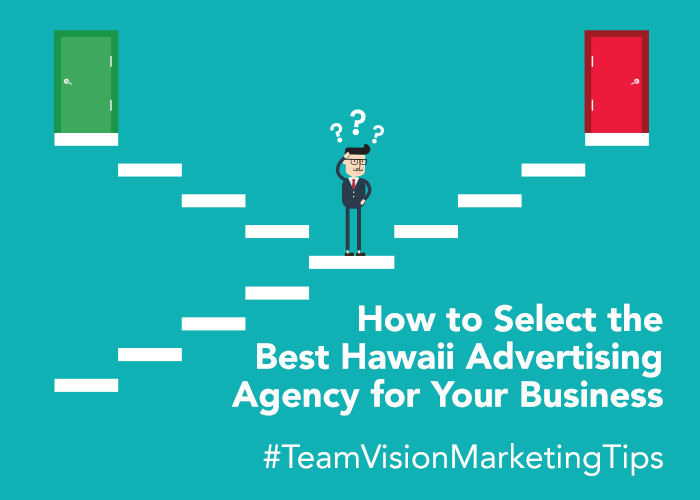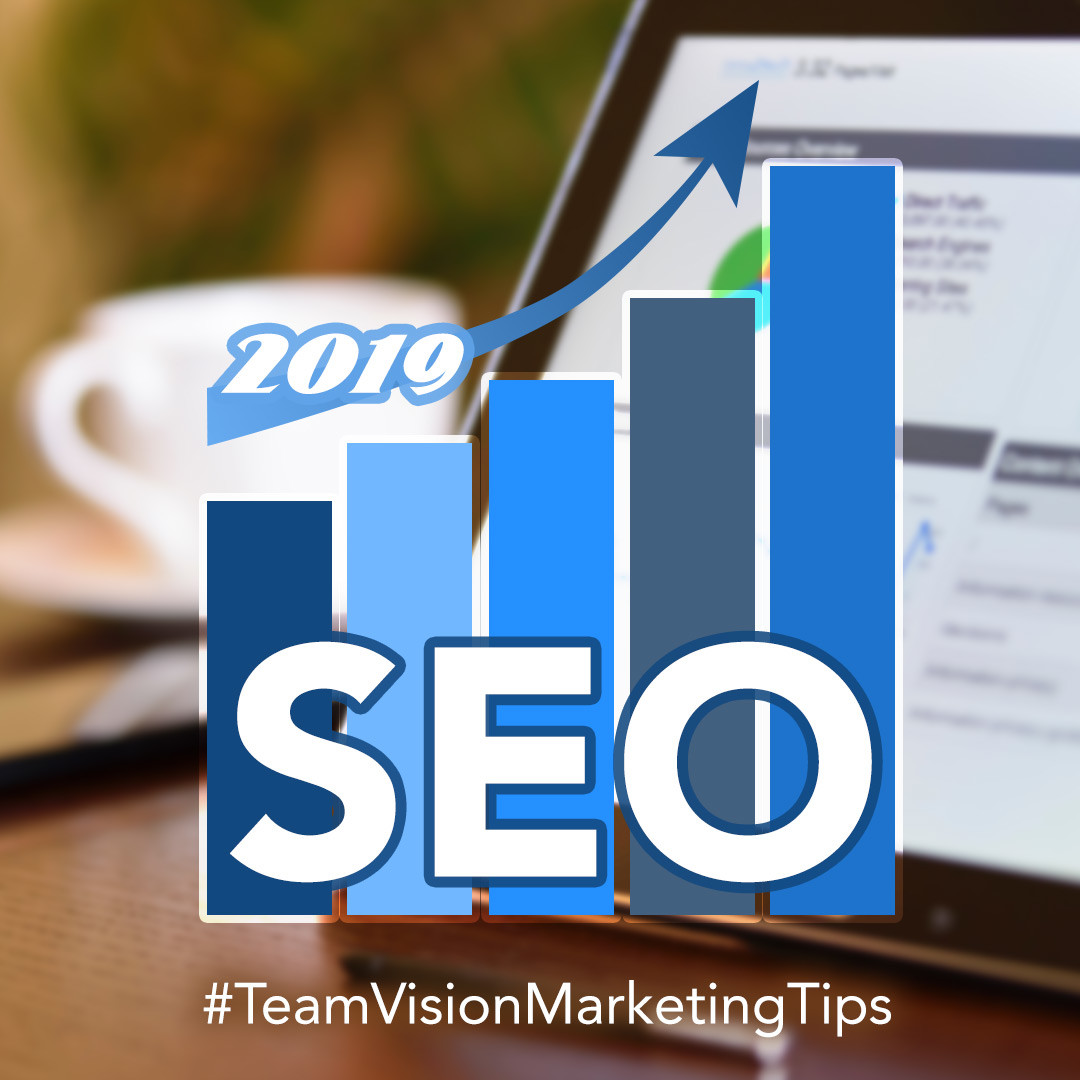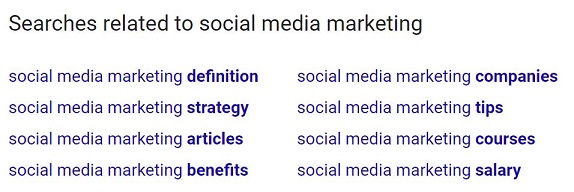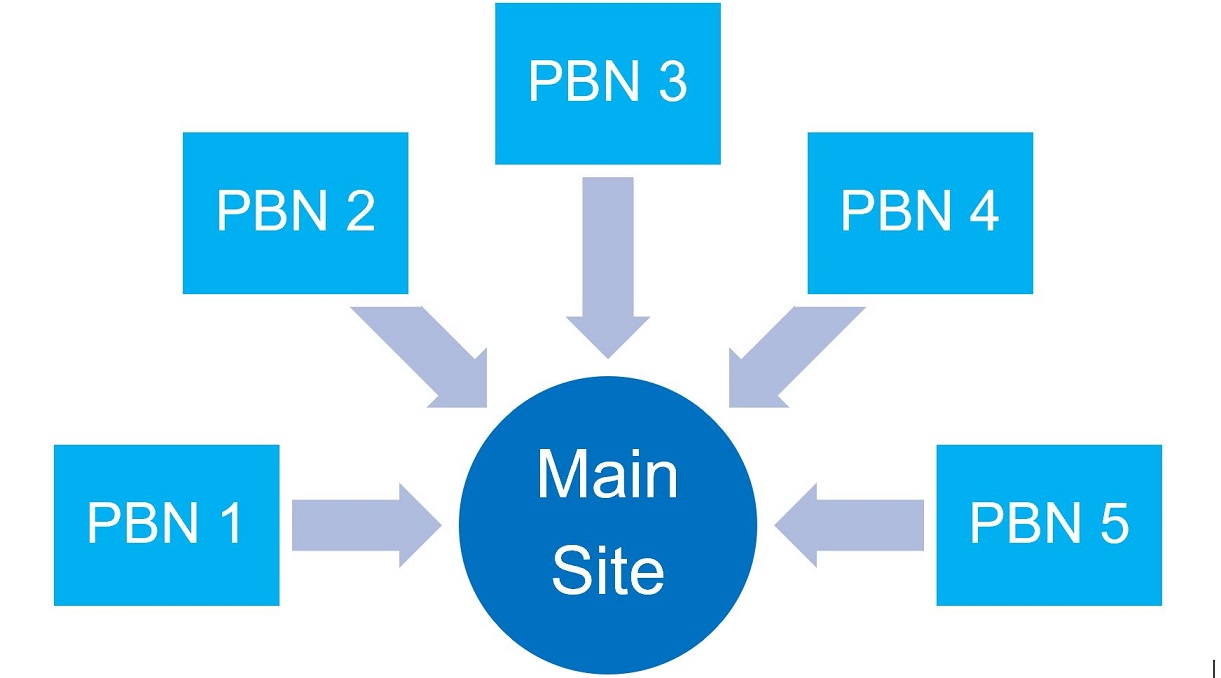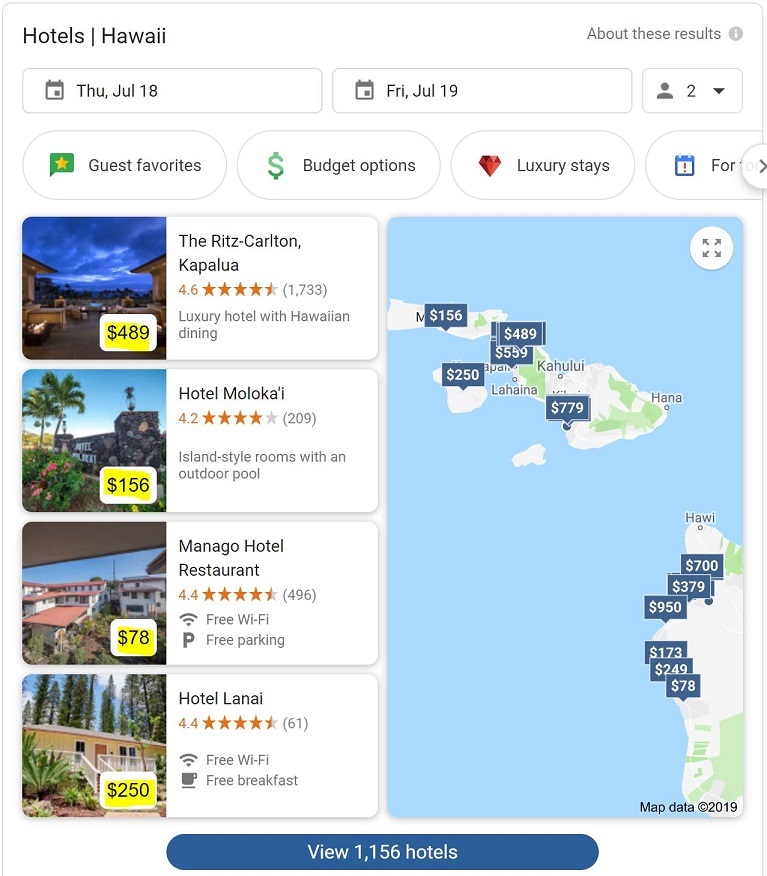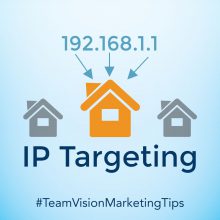If you’ve landed on our Hawaii Marketing Tips blog by accident while searching for Team Vision Marketing, please visit our homepage, creative portfolio or client video testimonials.
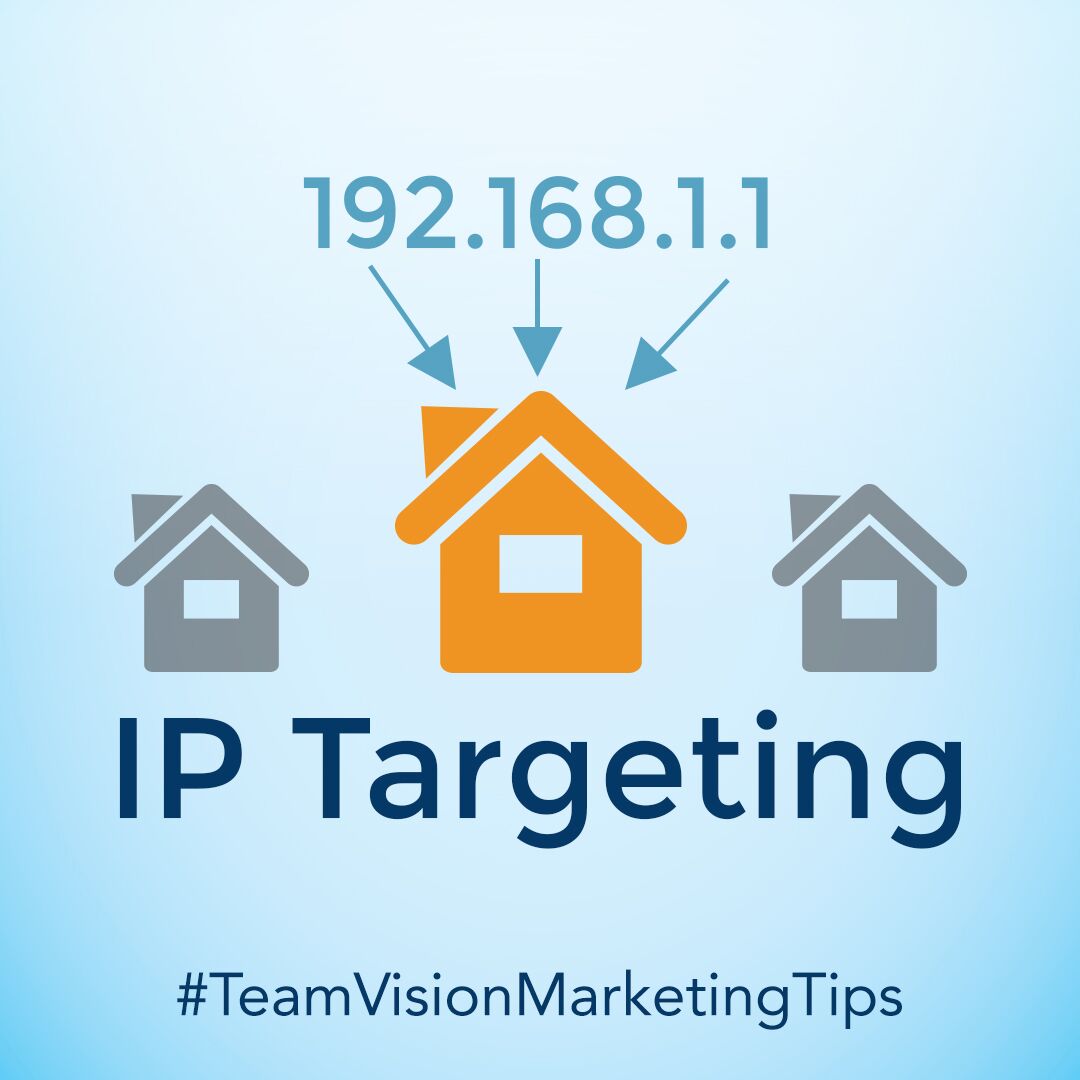
August 29, 2023
What Is IP Targeting and How Can I Use It for My Business?
If you’ve landed on our Hawaii Marketing Tips blog by accident while searching for Team Vision Marketing, please visit our homepage, creative portfolio or client video testimonials. If you’re interested in learning more about IP Targeting Campaigns, please continue reading.
IP Targeting – What Is It and Should My Business Use It?
If you’re a marketer, you’ve probably heard of IP targeting, but maybe your business or your advertising agency hasn’t yet added it to your marketing mix. This article is designed to give you an overview of what IP targeting is, explain some of the pros and cons, and give you a few examples of how you might use it for your next integrated marketing campaign.
What is IP Targeting and IP Advertising?
Here’s a quick definition for those of you who might not be familiar with IP Targeting. IP Targeting is the process of targeting digital advertising to specific households, businesses, etc. based on their Internet Protocol (IP) address. An IP address is a string of numbers assigned to your internet connection that allows you to speak with other devices on the Net.
How Does IP Targeted Advertising Work?
When a user connects to your web site, an IP address is provided for the transaction to take place. IP targeting captures that IP address, determines the location of that IP address (a home or business), and then matches that IP address against 3rd party databases of personal information. Once that IP address is captured from a web visitor, you can then conduct one-to-one marketing directly with that IP address or person. In addition, if you have customer or prospect lists with physical addresses, you can determine the IP address for homes or business locations on your target list, and then conduct digital advertising campaigns directly to those IP Addresses. Yes, there are privacy restrictions that must be met with IP targeting, but solutions to these issues have been addressed and are in place.
What are the benefits of IP Targeting?
The benefits of IP targeting over traditional cookie-based targeting is that with IP targeting you can acquire a user’s specific information. In contrast, with retargeting (or cookie-based targeting) you may never know who the actual end user is unless you get them to register or take action on your web site. To take things one step further, more recent advancements in IP targeting by certain providers now provide the ability to determine the home or business address from a user’s IP address. The additional benefit here is that you can then advertise to those prospects via digital marketing as well as printed direct mailers directly to their homes. Here again, there are privacy safeguards in place to protect the end users’ personal information.
Retargeting and other forms of digital marketing are based on placing a cookie on each user’s computer. Once a user deletes those cookies from his/her browser, or blocks cookies via their browser settings, you have lost that customer as an advertising prospect until they come back and visit your web site again. This is not the case with IP targeting which does not rely on cookies.
Is IP Targeting the Same as Geo-Fencing?
First, let’s define geofencing. Geofencing refers to drawing a virtual fence around a location and using a group of IP addresses. Ads inside this virtual boundary can be seen on computers, tablets, or mobile devices by any user within the defined location.
Although nearly all forms of location targeting use an IP address somewhere in the process, IP targeting and geo-fence targeting are in fact different – and each offers unique advantages. IP targeting is often seen as superior to geo-fencing because it uses an individual IP address versus geofencing which uses a group of IP addresses within specific geographic locations. The best way to explain the benefits of each method is through examples.
Scenario 1 – IP Targeting
Let’s say you own a refrigerator rental company and you want to target ads to students within the local university. Well, many universities share a web login with a single IP address with all registered students. Once you obtain that address, you could then target your ads to all the students’ devices that have accessed that university web site or wi-fi. For this scenario, you could also use geo-fencing as a strategy, but you would experience more advertising waste because your ads will not only reach students (your desired target audience), you will reach everyone who is within the university location geo-fence (including teachers, parents, friends, staff, delivery people, commuter traffic, tourist, etc.).
Scenario 2 – Geo-Fencing
Let’s say you own a visitor attraction, like our Dole Plantation client in Hawaii, and you want to target specific offers to all customers who are currently on your property. Since it’s likely that the majority of the people on the property are visitors, the best strategy to use here would be to create a geo-fence around the property and target people within that geofence. We currently do this using Dole Plantation Snapchat filters which can only be accessed via Snapchat on users’ mobile devices who are currently at the Dole Plantation location.
Scenario 3 – IP Targeting
For this example, let’s say you own a popular Hawaii real estate marketing web site and you want to send a print direct mailer to all people who visit a specific page on your web site, but you don’t want to require customers to complete a subscribe form. The best way to do this would be via IP targeting. Under this scenario, when a user visits your web site, their IP address is obtained and then cross referenced against 3rd party databases to acquire the user’s physical address and any other available information. In addition to targeting this user with digital advertising, you can also use their mailing address to send a highly targeted direct mailer to their home for a more integrated, and higher converting, marketing approach. It’s important to note in this scenario, matching IP addresses back to physical addresses is not 100% accurate (estimates range between 50-70% accuracy), but since you only pay for successes and actual direct mail pieces sent, it is still a highly effective strategy when integrated within your overall marketing strategy.
Scenario 4 – IP Targeting
This is a popular use case scenario currently being utilized by Colleges and Universities that use IP targeting to attract potential new students. These schools are able to target households where qualified, college-aged students are living with their parents. Because the address is normally a household IP, the campaign will reach both the parents and the student which is very effective because parents are nearly always involved in their child’s college selection process. Conversely, if you simply used a geo-fence strategy to target an entire zip code or neighborhood, you would waste advertising dollars by reaching a lot of households with no college-aged children, or no children at all.
Are There Issues with IP Targeting?
Just as geofencing, retargeting and other forms of digital marketing are not perfect and have their unique set of issues such as automated bots using up valuable advertising clicks, IP targeting also has some unique challenges, and that is why we always recommend a balanced integrated marketing approach for our clients. Here are just a couple of well-known issues of IP targeting.
Dynamic IP Addresses. Some users have what are called dynamic (or changing) IP addresses versus fixed IP addresses. This means that each time they connect to the Internet, their IP address is different. For an advertiser targeting a person through IP targeting, once that user’s IP address changes, that prospect just became a different person.
Router Complications. In some cases, people in a public location (i.e. Starbucks) access the Internet through a shared wi-fi service using the same IP address, the IP address the router uses to connect to the internet. Once those people leave that location and reconnect to another wireless device, their IP address changes again. This is why it’s best to target specific households or businesses where IP addresses tend to remain fixed.
How do I go get started with IP Targeted Advertising?
The best way to get started is with your existing database of prospects or customers. The home addresses can be used to find the IP addresses for households or business on your list, and then you’re ready to create targeted digital ads that can be deployed to this group via their computers, phones and tablets that access the internet via the IP you are targeting. If you don’t have a specific target list, you can purchase lists from list providers, and you can also target IP addresses by a number of other criteria such as business locations, household zip codes, event venues and more.
How are IP Targeting Advertising Campaign Results Measured
One of the great benefits of IP Targeting campaigns is the ability to track conversions back to a specific customer and campaign. For example, in an IP targeting campaign, you normally will have the customer’s physical address on file. After an IP Targeting campaign is completed, we can take the purchaser list and compare it against the IP Target list to determine exactly which customers purchased who originated from a specific IP Targeting campaign. This helps our clients more confidently calculate accurate sales numbers and ROI.
If you’re interested in exploring an IP Targeting campaign for your business, please contact us at (808) 536-0416, or via our contact form.
This is the blog of Team Vision Marketing, a full-service advertising and marketing agency located in Honolulu, Hawaii and serving clients on Oahu, Maui, Kauai and the Big Island of Hawaii.
Contact Us:
Phone: (808) 536-0416
Email: info@www.teamvision.com
Hear from Bruce Barrett, VP of Sales & Marketing at Castle & Cooke Hawaii, on his experience working with Team Vision Marketing.
- How to Select The Best Hawaii Advertising Agency for Your Business
- How AI Will Transform Marketing
- What Is IP Targeting and How Can I Use It for My Business?
- Everything You Need to Know About Instagram’s “Hidden Likes” Test
- Hawaii Social Media Marketing Tips
- How To Succeed in Zero-Click Search SEO
- Social Media Marketing Trends
- Your Guide to Google Rich Search Features
- What to Expect After A Google Broad Core Algorithm Update
- Top 5 Facebook Story Sticker Tips
- Hawaii Search Engine Optimization – SEO Companies
- Top 10 Instagram Story Sticker Tips
- Know The Common Difference: Black Hat SEO vs. White Hat SEO
- 10 Types of Content That Will Boost Engagement
- Video Advertising is Growing – Are You Making the Shift?
- Why You Should Advertise on Facebook Messenger
- Buying Instagram Followers – Is It Worth The Money?
- Top 10 Instagram Hashtag Tips for 2019
- 2018 Social Media Trends: Were We Right On The Money?
- Dreaded Advertising Agency Requests Roundup
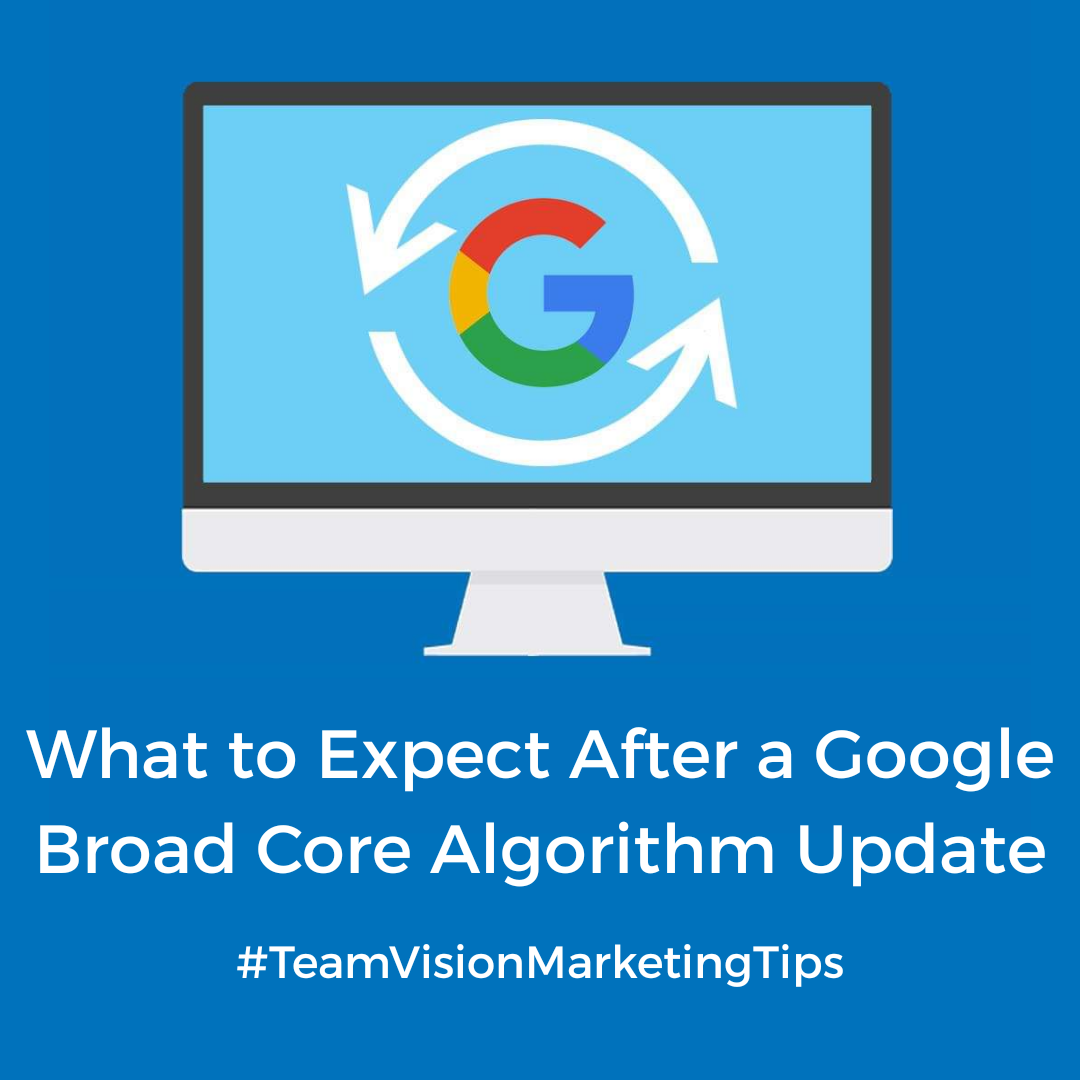
October 3, 2019
What to Expect After A Google Broad Core Algorithm Update
If you’ve landed on our Hawaii Marketing Tips blog while searching for Team Vision Marketing, please visit our home page, creative portfolio or client video testimonials. If you’re interested in learning more about Search Engine Optimization and SEO, please continue reading.
Ever wonder how Google’s algorithm works, and how it ranks the millions of web site content updates that are published every day? Sadly, we’ll never get to know exactly what factors go into their ranking system, but we do know that the Google team is constantly making to maintain their search engine algorithm. Although these updates usually go unnoticed, several times a year the algorithm goes under a big update called, the “Broad Core Algorithm Update.” With these big updates, you may notice some changes in your search engine optimization (SEO) rankings.
If you’re just hearing about the core update now, don’t worry. In this blog post, we provide a brief explanation on how these updates might affect your web site and what your brand should do after the update to upkeep the success of your online presence.
What is a “Broad Core Algorithm” Search Engine Update?
The broad core algorithm update is one big update that improves Google’s overall algorithm. With these updates, the algorithm changes the weight and importance of its ranking factors, then it reassesses everything on the internet, based on these improvements.
Broad core updates are not as major as the Penguin, Panda, Pigeon, or Fred updates, which were implemented to address specific faults or issues in Google’s algorithm. Instead, these updates are made to help Google provide the most relevant and best information to their audience.
What will happen to my web site’s SEO rankings?
Unfortunately, Google has a reputation for giving vague explanations on what issues the updates will address, so we don’t know exactly what will happen when the changes roll out. The rare times that Google has explained how an algorithm has changed, they were trying to promote a specific behavior, such as mobile responsiveness or the adoption of HTTPS as a required part of Search Engine Optimization (SEO) best practices.
However, you can expect to see notable changes to your web site ranking and web traffic. The improved algorithm will edit the web sites ranked on SERP, prioritizing the most relevant and up to date content. Luckily, Google announced the planned core updates in advance, which allowed companies to make last-minute improvements to their sites Search Engine Optimization strategies in order to lower the chances of any negative changes resulting from the algorithm update.
My web site SEO rank dropped! What should I do?
Remain calm. A shift in your SERP rank after a core update does not mean that Google is penalizing your site, nor does it mean that your web site is low quality. Keep in mind that this broad core update is reassessing your content against all the other content that has published since the last update, making newer and more relevant web pages more discoverable for everyone. Google used a wonderful analogy to describe how the core algorithm update operates:
“…Imagine you made a list of the top 100 movies in 2015. A few years later in 2019, you refresh the list. It’s going to naturally change. Some new and wonderful movies that never existed before will now be candidates for inclusion. You might also reassess some films and realize they deserved a higher place on the list than they had before.”
If your website is bringing in less traffic or is currently ranking lower on the Google search engine results, Team Vision Marketing suggests you do the following:
- According to Google executives, a drop in ranking probably lies in its relevancy factor. We recommend that you regularly post new blogs or publish new content on your web site.
- Look through your content. Make sure you are publishing well-written content that provides quality information and accurate data.
- Go through your web site to see if there are any technical issues, like slow loading pages or bad links, that you need to fix. You should be using Google Webmaster tools to regularly evaluate your site.
- Update and enhance your SEO strategies to make it easier for Google’s algorithm to crawl your website’s content.
Will my web sites SEO ranking recover?
Your ranking and web traffic may or may not improve in the next update. It’s not guaranteed that all your improvements will help your site recover to its former search engine ranking. Improving your web site’s rank on Google is not a one and done type of job. It requires regular maintenance to keep up with the competition. You may want to check out our recent Hawaii SEO Tips blog post, designed to help local Hawaii businesses improve their Search Engine Optimization strategies.
My web site rank went up! Will it stay like this forever?
That will depend on you. SEO best practices are constantly changing over time. Team Vision urges all brands, including the ones who are currently ranked at the top of the SERP, to regularly make improvements to their web site and their SEO. Regular web site maintenance is the key to sustaining your web site’s successful online presence.
To conclude, Google’s broad core algorithm update ensures that it’s providing the best information for everyone. The core update may or may not affect your online presence, but all brands should actively publish new content and practice webmaster approved SEO tactics. If you are a local Hawaii business that needs assistance with your advertising, web development and/or strengthening your Search Engine Optimization (SEO) efforts, reach out to Team Vision, a Hawaii full-service Hawaii advertising and digital marketing firm. We have designed and built web sites, and provided SEO management services for Hawaii clients on O’ahu, Maui, Kauai, Lana’i, and the Big Island of Hawai’i.
Contact Us:
Phone: (808) 536-0416
Email: info@www.teamvision.com
Hear from Harry Saunders, President of Castle & Cooke Hawaii, on his experience working with Team Vision Marketing.
- How to Select The Best Hawaii Advertising Agency for Your Business
- How AI Will Transform Marketing
- What Is IP Targeting and How Can I Use It for My Business?
- Everything You Need to Know About Instagram’s “Hidden Likes” Test
- Hawaii Social Media Marketing Tips
- How To Succeed in Zero-Click Search SEO
- Social Media Marketing Trends
- Your Guide to Google Rich Search Features
- What to Expect After A Google Broad Core Algorithm Update
- Top 5 Facebook Story Sticker Tips
- Hawaii Search Engine Optimization – SEO Companies
- Top 10 Instagram Story Sticker Tips
- Know The Common Difference: Black Hat SEO vs. White Hat SEO
- 10 Types of Content That Will Boost Engagement
- Video Advertising is Growing – Are You Making the Shift?
- Why You Should Advertise on Facebook Messenger
- Buying Instagram Followers – Is It Worth The Money?
- Top 10 Instagram Hashtag Tips for 2019
- 2018 Social Media Trends: Were We Right On The Money?
- Dreaded Advertising Agency Requests Roundup

